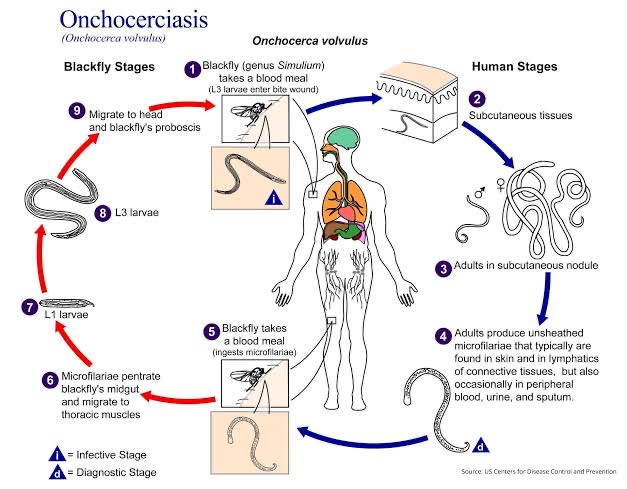
This is also known as Onchocerciasis. It is an infection caused by a parasitic worm known as onchocerciasis volvulus, which is spread by the bite of an infected blackfly.
It is called river blindness because the flu that transmits the infection breeds in rapidly flowing streams.
How does this infection cause blindness?
The infection causes vision changes or total blindness which is caused by immune response to dead or dying microfilaria. Adult female worms can live under the skin in a human host for up to 15 years producing many larvae which disseminate and can survive for 2-3 years.
When there are lots of microfilariae in the eye, it can damage all internal tissues of the eyes leading to inflammations, bleeding, and other complications which could lead to blindness if left untreated.
Risk factors
People who live in rural riverine areas are at greater risk of this infection.
Eye symptoms
- Itching of the eyes
- Redness
- Dryness
- Light sensitivity
- Cataract (if left untrreated)
Other symptoms
- Change in skin pigmentation
- Skin nodules
- Severe itching
- Rashes
- Enlarged groin
Diagnosis: This could be diagnosed through skin biopsies in the lab or slit lamp examination in an eye involvement.
Treatment
Use of a drug known as Ivermectin depending on the stage of parasitic infection.
It is also advisable to see your doctor or optometrist in a case of eye involvement.
Conclusion: Personal protective measures to prevent insect bite should be taken or used when visiting endemic regions as there is no vaccine for onchocerciasis presently.
